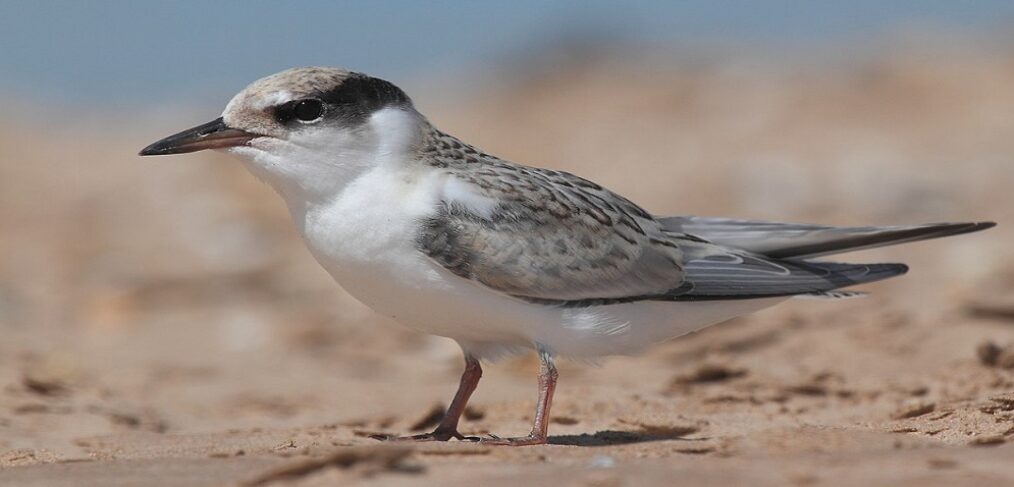
species of the week #25 – the little tern
All tern species look very similar. Unlike most other birds, they always keep their heads down when flying. They are characterized by a black upper head, a grey back, short legs, a pointed beak, narrow, long, pointed wings and long tail feathers. Usually the underside is white. The Little Tern is the smallest species of tern, measuring only 20 cm and weighing 45 g.
| Distribution status | extinct |
| Remaining occurrences | Schleswig-Holstein, Mecklenburg-Vorpommern, few breeding pairs in Sachsen-Anhalt |
| Last sighting in Rhineland-Palatinate | 1966 near Weißenthurm |
| Habitat | River banks, wetlands, lakes, coastal foreland, Wadden Sea |
| Endangerment | breeding ground disturbances, habitat loss |
Most species of terns can be seen along the coasts, inland at lakes, in wetlands and on islands. They breed in large colonies on the ground, often together with black-headed gulls or gulls. Gulls were last seen in Rhineland-Palatinate in 2012 and have also been considered extinct since then. Like the Little Terns, they lived on the Rhine alps and were a native breeding bird. However, there has been no evidence of breeding for at least 10 years.
Little terns nest on fine sandy to gravelly beach walls, or at least on areas without vegetation. The nest hollow scratched out by the female is only in exceptional cases covered with some nesting material, stones or fragments of shell. Even the slightest disturbance will cause the terns to fly up. The clutches, which are temporarily abandoned, are a welcome target for animal nest robbers. Moreover, the well-camouflaged clutches can be trampled by careless walkers. In Schleswig-Holstein all breeding sites are therefore guarded. Only 120 breeding pairs are still suspected on the German Baltic coast. NABU is currently testing breeding rafts as safe undisturbed breeding sites on the Baltic Sea.
Little terns feed on molluscs, insects, crustaceans and small fish, which they capture by spectacular dives into the water. They live a monogamous life, for pair bonding the offering of a fish is important. Already at the end of July the Little Terns leave Northern Europe to spend the winter in the Mediterranean and in Africa.
Politically necessary:
– Habitat conservation and restoration
– Establishment and safeguarding of access bans at breeding sites
– better staffing of the nature conservation authorities to monitor the bans
– Support for nature conservation associations in biotope and species protection
To the other species of the week here
Image from: Agustín Povedano from El Puerto de Santa María, Extremadura y Andalucía – Charrancito, joven Sterna albifrons, CC BY 2.0, https://commons.wikimedia.org/w/index.php?curid=19331860
